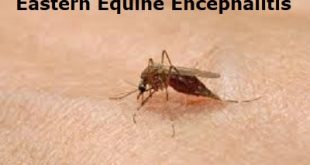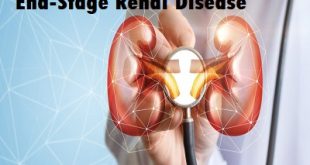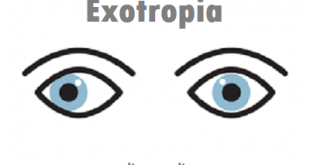Description
Esophageal atresia (EA) is a rare birth defect in which a baby is born without part of the esophagus (the tube that connects the mouth to the stomach). Instead of forming a tube between the mouth and the stomach, the esophagus grows in two separate segments that do not connect. In some children, so much of the esophagus is missing that the ends can’t be easily connected with surgery. This is known as long-gap EA.
EA frequently occurs along with tracheoesophageal fistula (TEF), and as many as half of all babies with EA/TEF have another birth defect, as well. Without a working esophagus, it’s impossible to receive enough nutrition by mouth. Luckily, EA is usually treatable.
Types of Esophageal Atresia
There are four types of esophageal atresia as follows:
- Type A is when the upper and lower parts of the esophagus do not connect and have closed ends. In this type, no parts of the esophagus attach to the trachea.
- Type B is very rare. In this type, the upper part of the esophagus is attached to the trachea, but the lower part of the esophagus has a closed end.
- Type C is the most common type. In this type, the upper part of the esophagus has a closed end and the lower part of the esophagus is attached to the trachea, as is shown in the drawing.
- Type D is the rarest and most severe. In this type, the upper and lower parts of the esophagus are not connected to each other, but each is connected separately to the trachea.
Pathophysiology
As a fetus is growing and developing in its mother’s uterus before birth, different organ systems are developing and maturing. The trachea and the esophagus begin developing as one single tube. At about four to eight weeks after conception, a wall forms between the fetus’ esophagus and trachea to separate them into two distinct tubes. If this wall does not form properly, TE fistula and/or esophageal atresia can occur.
Causes of Esophageal Atresia
- EA/TEF occurs as a result of a developmental failure during early fetal (embryonic) growth. The reason for this failure occurs is not fully understood.
- Isolated (nonsyndromic) EA/TEF is believed to occur due to the combination of multiple different factors include genetic, environmental, and immunological ones. However, no specific contributing factors have been identified.
- EA/TEF can also occur as part of a larger genetic syndrome such as CHARGE syndrome, Feingold syndrome, anophthalmia-esophageal-genital (AEC) syndrome, Pallister-Hall syndrome, Fanconi anemia, chromosome 22q deletion syndrome, or chromosomal disorders such as trisomy 18, trisomy 13, or Down syndrome (trisomy 21).
Risk factors
Having the following factors can raise your baby’s risk for these issues:
- Trisomy 13, 18, or 21
- Digestive tract problems include a diaphragmatic hernia, duodenal atresia, or imperforate anus.
- Heart problems include the ventricular septal defect, tetralogy of Fallot, or patent ductus arteriosus.
- Kidney and urinary tract problems. These include a horseshoe or polycystic kidney, absent kidney, or hypospadias.
- Muscular or skeletal problems
- VACTERL syndrome. This problem involves spinal, anal, heart, TE fistula, kidney, and limb issues.
Symptoms of Esophageal Atresia
- Bluish coloration to the skin (cyanosis) with attempted feeding
- Coughing, gagging, and choking with attempted feeding
- Drooling
- Poor feeding
- Frothy white bubbles in your baby’s mouth
- Difficulty breathing
- Very round, full abdomen
- Bubbly mucus in the mouth
Complications of Esophageal Atresia
- Difficulty swallowing, and choking on food, is common in people born with esophageal atresia.
- Problems with the normal movement of foods and liquids down the esophagus (peristalsis).
- Scarring that can occur in the esophagus after surgery as the wounds heal, which can partially block the passage of foods.
- About one-half of children who had esophageal atresia repaired will have problems with GERD or gastrointestinal reflux disease.
Diagnosis and Test
Prenatal: Ultrasonography
Prenatal sonography is a valuable screening tool for EA and/or TEF. Prenatally, the ultrasonographic finding of an absent or small fetal stomach bubble in combination with maternal polyhydramnios is suggestive of EA and/or TEF. [20] The diagnostic accuracy is increased if an anechoic area is present in the middle of the fetal neck; this sign differentiates EA from diseases with possible swallowing impairments.
Postnatal:
Postnatally, high-frequency sonography has been used to evaluate the proximal and distal pouch as well as the gap, but it has limited utility in demonstrating a fistula. Endoscopic ultrasonography produces a 5-layered image of the esophageal wall that has been used in cancer staging; it may have a future use in fistular localization. In addition, the aortic arch may be located sonographically to plan for EA and/or TEF repair.
X-ray
- Barium Study- Barium enhanced X-ray may reveal the dilated esophageal pouch. The pouch in few cases is substantially larger in size because of the collection of amniotic fluid in the pouch during intrauterine fetal growth.
- Abdominal X-ray- This may show air in the stomach when the lower esophageal pouch is connected to trachea through the fistula.
- Chest X-Ray- This may show signs of pneumonia and bronchitis.
Treatment and Medications
Medical management
- Frequent or Continuous Removal of Retained Secretions from Pouch- The mucus and saliva are continuously removed via a catheter. A tiny catheter is passed from the nose and tip is left in the pouch of the proximal end of the esophagus.
- Intravenous Feeding- Baby is fed through the intravenous catheter. Nutrition and hydration are provided until surgery is performed.
- Antibiotic Treatment- Infection is treated with antibiotics.
- Gastric Feeding- Baby is often fed through a tube, which is passed from outside directly into the stomach.
Surgical repair
The type of surgery depends on the following:
- Type of abnormality
- The overall health of the baby and medical history
- The opinion of the surgeon and other physicians involved in the baby’s care
- Expectations for the course of the condition
- Patient opinion and preference
When the infant’s condition is stable, extrapleural surgical repair of the esophageal atresia and closure of the tracheoesophageal fistula can be done. If a fistula is noted, it needs to be ligated.
Some pediatric surgeons do a Fokker procedure. In this procedure, traction sutures are placed in the ends of the esophageal pouches, brought out through the skin, and fixed with silastic buttons. Traction is gradually applied to the sutures, which stimulates elongation of the esophagus by as much as 1 to 2 mm/day. Once the ends of the esophagus have come together, or are in close proximity, a primary anastomosis is done.
Prevention of Esophageal Atresia
No preventive measures are recommended because the cause of these birth defects was as of 2004 unknown and their occurrence not predictable.
 Diseases Treatments Dictionary This is complete solution to read all diseases treatments Which covers Prevention, Causes, Symptoms, Medical Terms, Drugs, Prescription, Natural Remedies with cures and Treatments. Most of the common diseases were listed in names, split with categories.
Diseases Treatments Dictionary This is complete solution to read all diseases treatments Which covers Prevention, Causes, Symptoms, Medical Terms, Drugs, Prescription, Natural Remedies with cures and Treatments. Most of the common diseases were listed in names, split with categories.







